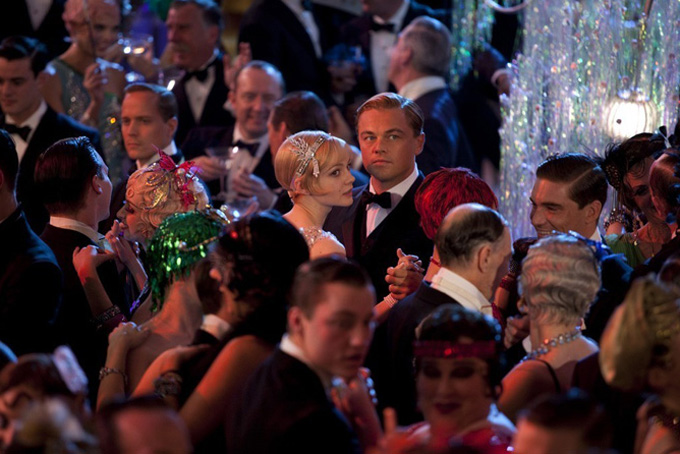
“The Great Gatsby” stars Leonardo DiCaprio as the glamorous, elusive billionaire; Toby Maguire as his modest, admiring neighbor Nick Carraway; Carey Mulligan as Daisy; and Joel Edgerton as Daisy’s husband, Tom Buchanan. (CNN Photo: Courtesy Warner Bros. Pictures)
by Tom Charity
(CNN) — “Great Gatsby” director Baz Luhrmann isn’t the type to be cowed by literary pedigree, not even that of F. Scott Fitzgerald.
His movies, including “William Shakespeare’s Romeo + Juliet,” are like watching a three-ring circus. They revel in surface, spectacle and sensory overload. They’re audaciously, passionately artificial and at the same time unabashedly romantic — post-modern pop medleys aimed at the heart, not the brain.
Perhaps Luhrmann even identifies with Fitzgerald’s Jay Gatsby; after all, they’re both decadents.
But Fitzgerald wasn’t Gatsby, and Gatsby could never have written such a novel. It takes an observer like Nick Carraway (Tobey Maguire) to distill the finer sentiments from this sorry tale of the super-rich, and Luhrmann isn’t that. He’s an extrovert who wants to thrill us and immerse us in his giddy daring. The last thing he wants to do is sit back and watch.
There are no two ways about it: “The Great Gatsby” is misconceived and misjudged, a crude burlesque on what’s probably American literature’s most precious jewel.
Warning bells go off right from the first shots of a CGI version of New York’s Long Island. The camera is in a state of constant agitation, while the actors — and they’re good actors — seem to have been instructed to vamp. Either that, or they decided it was the only way to compete with the film’s garish hot deco.
But let’s give Luhrmann his due: The man does cut a good teaser. The idea to swap Scott Joplin for Jay-Z and ragtime for rap was a bold and brilliant choice. Casting Leonardo DiCaprio as the glamorous, elusive billionaire Gatsby and Maguire as his modest, admiring neighbor was right on.
Carey Mulligan as Daisy wasn’t as inspired. She gets the sadness of the character but not the flip side of her personality, and she’s just not a bright enough spark to keep Gatsby’s torch burning for so long.
And shooting in 3-D? Look at “Hugo” and “Life of Pi”: It could have worked.
Yet Luhrmann seems utterly bamboozled by the technique, as if it’s thrown off his rhythm. The early scenes especially are likely to induce motion sickness, and not just because Nick is getting drunk on New York’s high society. We know Luhrmann can throw a wild party, but the movie doesn’t build or grow; it just keeps hitting the same high notes until we go numb to the din.
And if he’s lost in the loud revelry, Luhrmann is completely out of his element in the more intimate scenes. The reunion between Jay and Daisy is played for laughs (and it gets a couple, too), but Luhrmann shortchanges whatever it is that pulls these lovers together. For such an elaborate display of courtship, it’s a remarkably unsensual affair.
Fitzgerald’s “The Great Gatsby” will endure this indignity as surely as it outlasted previous versions with Alan Ladd and Robert Redford. It’s a shame, though, since the novel’s depiction of a society dancing on the edge of a precipice is so timely. It’s hard not to feel angry at the waste.